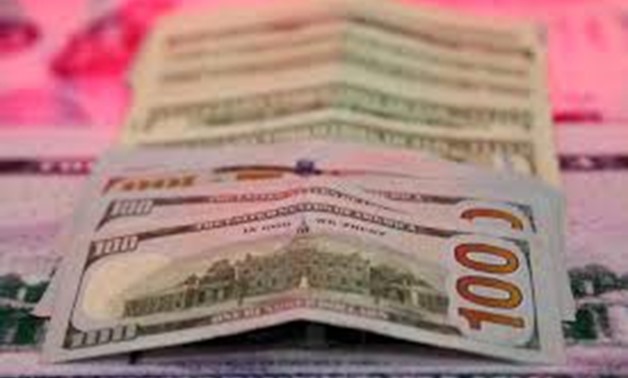
U.S. dollar banknotes are pictured at a currency exchange office in Diyarbakir, Turkey, November 17, 2017. REUTERS/Sertac Kayar/File Photo
LONDON - 17 July 2019: Resurgent trade tensions, concern over the outlook for corporate America and the growing risk of a chaotic Brexit in the United Kingdom dampened appetite for equities on Wednesday while keeping alive interest in the dollar and government bonds.
U.S. President Donald Trump has threatened again to tax another $325 billion of Chinese goods, amid nervousness over when the two sides will resume trade talks. But the United States too could face Chinese sanctions following a World Trade Organization ruling on Tuesday.
Wall Street which surged to record highs recently on back of the Federal Reserve’s rate-cut signals, has shown nervousness this week as big banks reporting quarterly earnings — Citi, JPMorgan and Wells Fargo — have shown drops in net interest margins, a sign low interest rates are squeezing bottom lines.
Bank of America, Bank of New York Mellon, Netflix, IBM, eBay are among companies reporting results later in the day and investors will watch for signals on the profit outlook.
“The market is over-extended. The anticipation is for a lot of liquidity injections and rate cuts and there’s little room in the market for disappointment in corporate earnings,” said Francois Savary, chief investment officer at Swiss wealth manager Prime Partners.
“If there is disappointment in earnings-per-share, that will drive more consolidation in the market.”
Investors fear central banks may find it hard to rescue a world economy under pressure from a year-long trade spat — the latest sign of which came from Singapore whose exports sank by the most in six years in June.
Equity futures suggest a modestly firmer opening on Wall Street while MSCI’s global equity index held just off recent 10-day highs.
MSCI’s index of Asian shares ex-Japan fell a quarter percent, while a pan-European index opened flat to weaker..
A Fed rate-cut cycle would put further pressure on margins at U.S. banks. Money markets are are 100% priced for three interest rate cuts of 25 basis points each by next March, while some banks such as Barclays predict three cuts by the end of the year.
Those wagers have not budged even after a surprisingly strong U.S. retail sales reading on Tuesday, robust June jobs data and the biggest rise in New York manufacturing in over two years. In fact, Chicago Fed President Charles Evans touted 50 basis points of easing this month.
Savary said those expecting three rate cuts this year could be disappointed as that magnitude of easing would be “compatible with a recession.”
But Michelle Girard, chief U.S. economist at NatWest Markets, said the domestic data would not deter the Fed.
“The Fed knows the U.S. consumer is strong; policymakers are worried about the downside risks associated with global growth and weak manufacturing/business investment, which is why they believe a rate cut is appropriate.”
That alongside the trade uncertainty and soft equity markets kept bonds well-bid — U.S. Treasury yields, which rose after the retail data, inched lower again. Another ‘safe’ asset, German bonds, also saw a fall in yields.
STERLING STRICKEN
Fed expectations have not dented the dollar however. It stood around a one-week high against a basket of currencies after the previous day’s half-percent jump.
The greenback tends to benefit from trade war jitters but also is backed by higher interest rates than most other major currencies. It is also receiving a boost from the concerns around sterling which has fallen to 27-month lows on fears Britain will tumble out of the European Union with no trade deal to soften the blow.
The pound fell further below $1.24, bringing losses this month to almost 2.4%. It has fallen 8% from its March peak of $1.3383.
The euro which lost 0.4% on Tuesday remains under pressure after weak business sentiment data heightened expectations the European Central Bank will cut rates twice this year from its current minus 0.4% level.
The dollar’s gains tarnished gold, pushing it 0.2% lower to $1,403 per ounce while oil prices stabilized after falling more than 3% earlier.


Comments
Leave a Comment